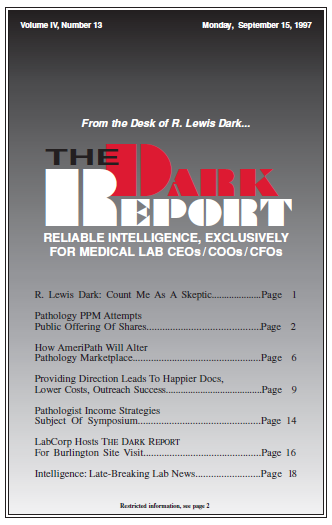CEO SUMMARY: Some of the best stories in laboratory management are found in the unlikeliest of places. In this case we travel to the Olympic Peninsula in Washington state, where a 120 bed rural hospital has developed an energized laboratory team. It wasn’t easy and it didn’t happen quickly. But since the laboratory was revamped, …
Providing Direction Leads To Happier Docs, Lower Costs, And Outreach Success Read More »
To access this post, you must purchase The Dark Report.


